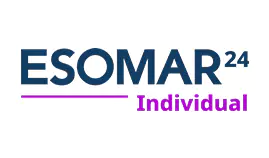
Organizations rely on robust data management systems to inform strategic decisions. SQL Server, a leading relational database management system, is widely used for storing and managing data. However, data alone is not enough; organizations need powerful Business Intelligence (BI) tools to analyze, visualize, and derive insights from that data.
How to Integrate SQL Server with BI Tools
Connecting BI tools to SQL Server typically involves a few straightforward steps:
- Data Source Connection: Open your BI tool and navigate to the option for adding a new data source. Select SQL Server as the data source.
- Authentication: Choose the appropriate authentication method. This could be Windows Authentication or SQL Server Authentication, depending on your organization’s security protocols.
- Enter Connection Details: Provide the necessary connection details, including the server name, database name, and any required credentials.
- Establish Connection: Test the connection to ensure everything is set up correctly, then save the connection settings.
Data Import vs. Direct Query
When integrating SQL Server with BI tools, you can choose between importing data into the BI tool or using direct query options:
- Data Import: This method involves copying data from SQL Server into the BI tool’s memory. It is useful for offline analysis and can lead to faster performance in visualizations. However, it may not reflect real-time changes in the data.
- Direct Query: This method allows the BI tool to query the SQL Server database in real time. It provides up-to-date information but may lead to performance issues if the underlying queries are complex or the dataset is large.
Integrating these tools effectively may also benefit from professional SQL Server development services to ensure optimized performance and seamless data connectivity.
Overview of Popular BI Tools
Power BI
Power BI, developed by Microsoft, is a cloud-based analytics service that provides interactive visualizations and business intelligence capabilities. With an easy-to-use interface, it allows users to create reports and dashboards without requiring extensive technical skills. Integrating Power BI with SQL Server enables users to access real-time data, perform in-depth analysis, and visualize complex datasets through intuitive dashboards.
Tableau
Tableau is another powerful BI tool known for its advanced data visualization capabilities. It allows users to create detailed and interactive visualizations from various data sources. When integrated with SQL Server, Tableau can leverage the robust querying capabilities of SQL to provide insights into large datasets. This combination is particularly useful for organizations seeking to uncover patterns and trends through visual storytelling.
Other Notable BI Tools
In addition to Power BI and Tableau, other BI tools like Qlik, Looker, and Domo also offer integration capabilities with SQL Server. Each of these tools has unique features and advantages, making them suitable for different business needs.
Benefits of Combining SQL Server with BI Tools
One of the primary benefits of integrating SQL Server with BI tools is the enhanced data visualization capabilities. BI tools offer a range of visualization options, from simple bar charts to complex heat maps. These visualizations help users understand trends and patterns that might be difficult to see in raw data.
Integrating SQL Server with BI tools enables the generation of interactive reports that facilitate data-driven decision-making. Stakeholders can explore data from various angles and drill down into specifics, leading to more informed choices. For instance, a retail company might use this integration to create sales reports that highlight performance by region or product category.
With a live connection to SQL Server, BI tools can provide real-time data analysis, allowing businesses to react quickly to changing conditions. For example, a financial institution can monitor transactions in real time, identifying anomalies and potential fraud instantly.
Integrating BI tools with SQL Server can significantly improve performance, especially for large datasets. BI tools can efficiently handle complex queries and large volumes of data, ensuring that users have access to the insights they need without experiencing delays.
Conclusion
Integrating SQL Server with Business Intelligence tools like Power BI and Tableau offers significant advantages in data visualization and reporting. By leveraging these technologies, organizations can transform raw data into actionable insights, enhancing decision-making and driving business success. As businesses increasingly recognize the importance of data in strategic planning, the integration of SQL Server with BI tools will continue to play a crucial role in achieving data-driven results.






